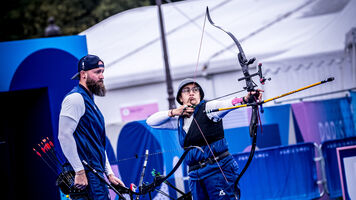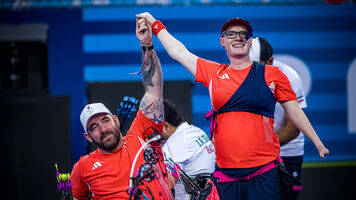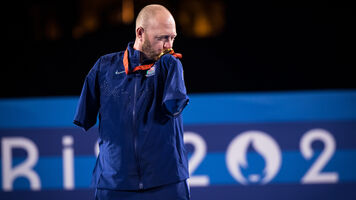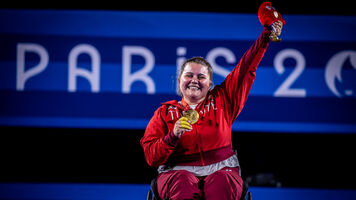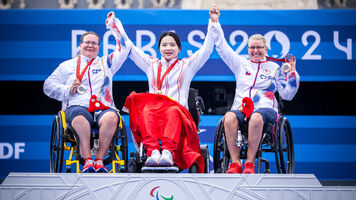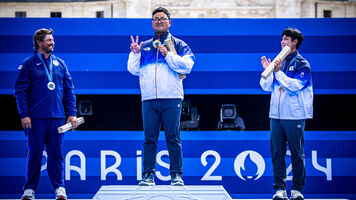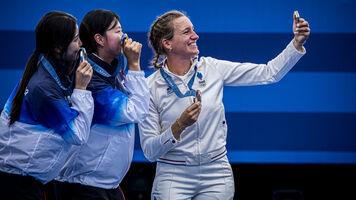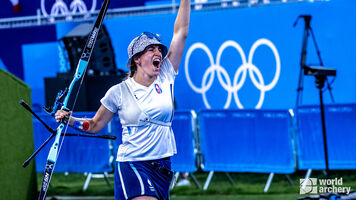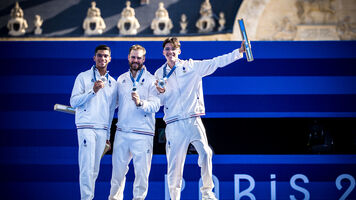Stat sheet: 10 facts from Rio 2016 Olympics entry list
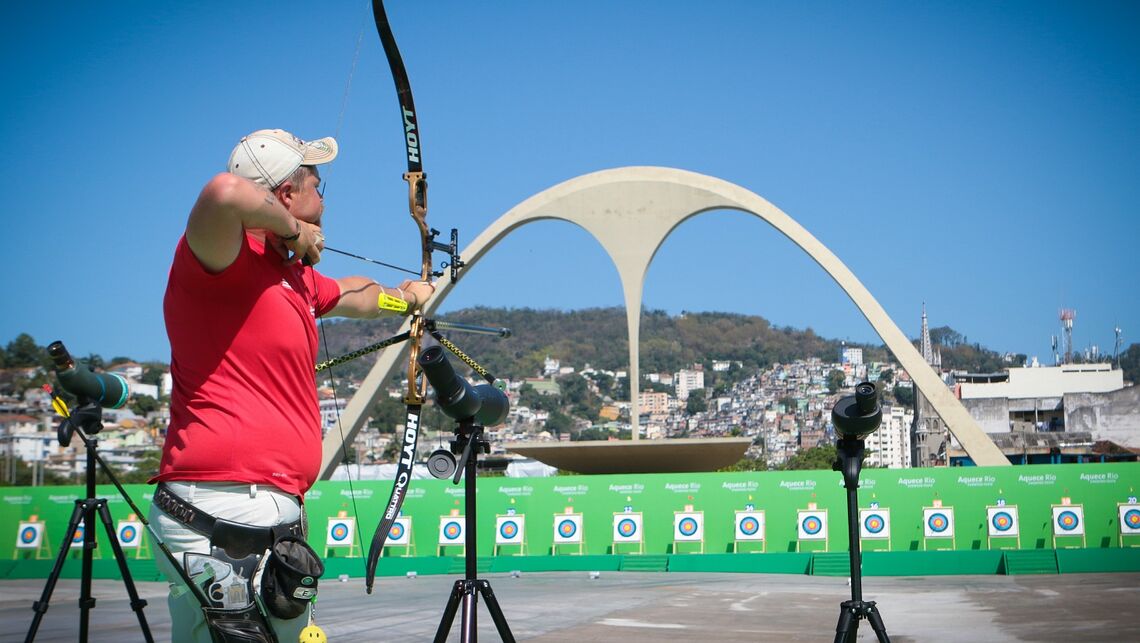
Due to a last-minute change in entries, some of this data was changed on 3 August 2016.
Visit the Rio 2016 Olympic Games event page, and click the entries tab, to check the full list of athletes registered to compete in the Sambodromo at the start of August.
Here are 10 things we noticed…
1. Olympic Champions
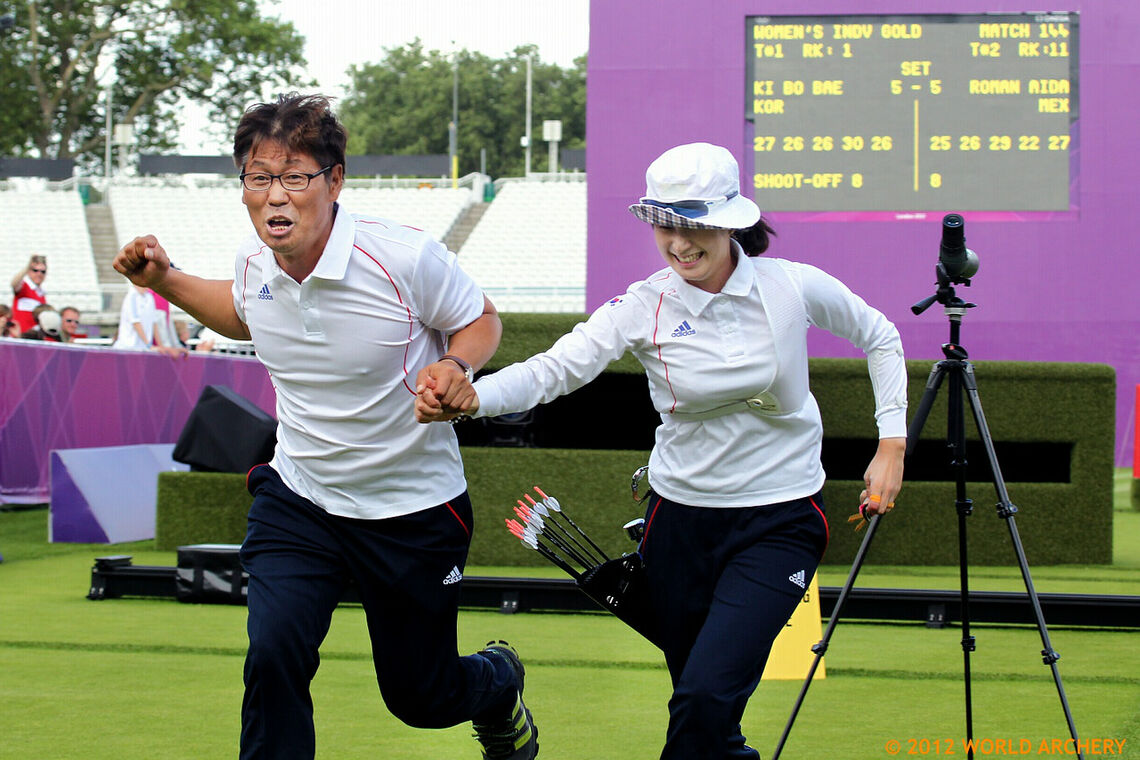
Three previous individual Olympic Champions will take to the field in Rio in search of their second title. Only one archer in history has won two Olympic golds: Darrel Pace, who was ranked number two on our list of the best Olympic archers of all time – and nobody’s repeated in consecutive Games.
(Ki Bo Bae is the only archer in Rio with a chance to break that record.)
- MARCO GALIAZZO
 – Athens 2004
– Athens 2004 - KI BO BAE
 – London 2012
– London 2012 - VIKTOR RUBAN
 – Beijing 2008
– Beijing 2008
Just three gold medallists from previous team events return in Rio, too – all from London – and two were individual medallists, as well:
- Ki Bo Bae
 – London 2012
– London 2012 - Marco Galiazzo
 – London 2012
– London 2012 - MAURO NESPOLI
 – London 2012
– London 2012
2. WINNING MATTERS
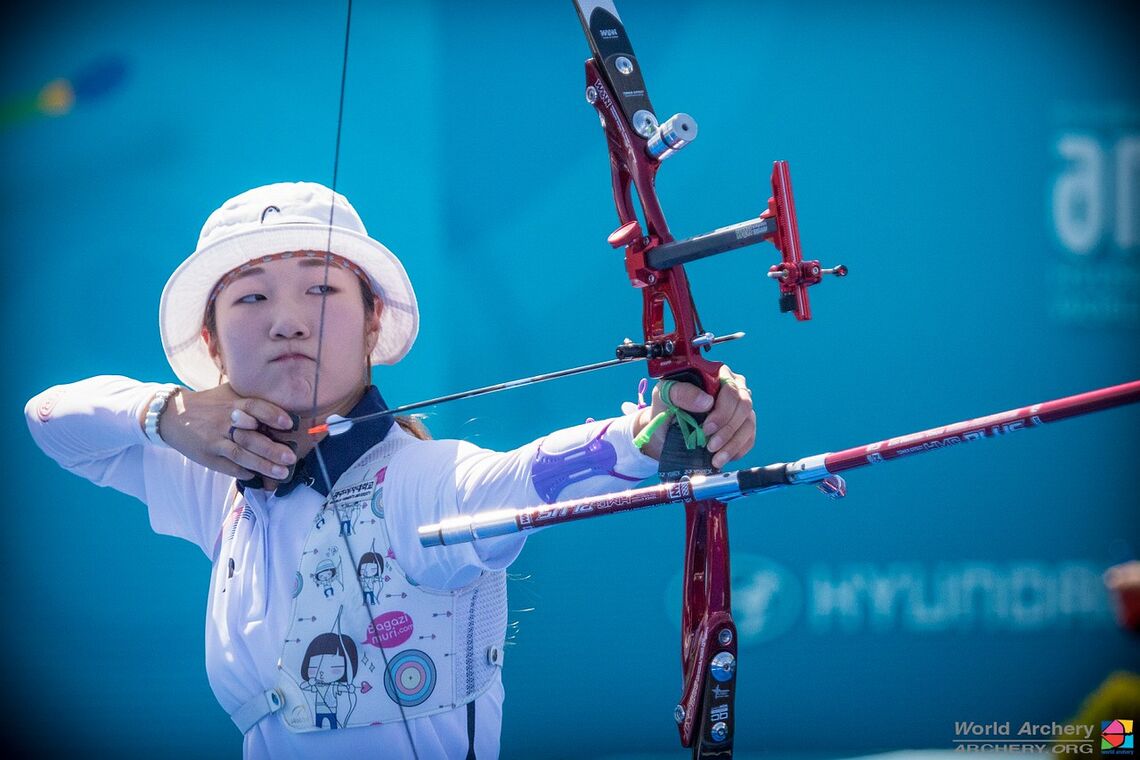
In head-to-head archery, shooting the arrow you need when you need it most is what matters most. The best statistic to compare archers’ winning ability is probably match-win percentage.
Ranking all the Rio athletes – with a minimum of 30 matches at world ranking events on record – by match win percentage confirms something we all know: Koreans are good.
- 1. CHOI MISUN
 – 89%
– 89% - 2. LEE SEUNGYUN
 – 86%
– 86% - 3. = KIM WOOJIN
 – 82%
– 82% - 3. = Ki Bo Bae
 – 82%
– 82% - 5. = BRADY ELLISON
 – 76%
– 76% - 5. = ZAHRA NEMATI
 – 76%
– 76%
What’s more, 12 Rio-bound archers, all with at least four world-ranking level matches under their belts in our database, have never lost a tiebreaker. Turkey’s Yasemin Anagoz leads that group, with four shoot-off wins out of four since her international debut in 2015.
3. Olympic veterans
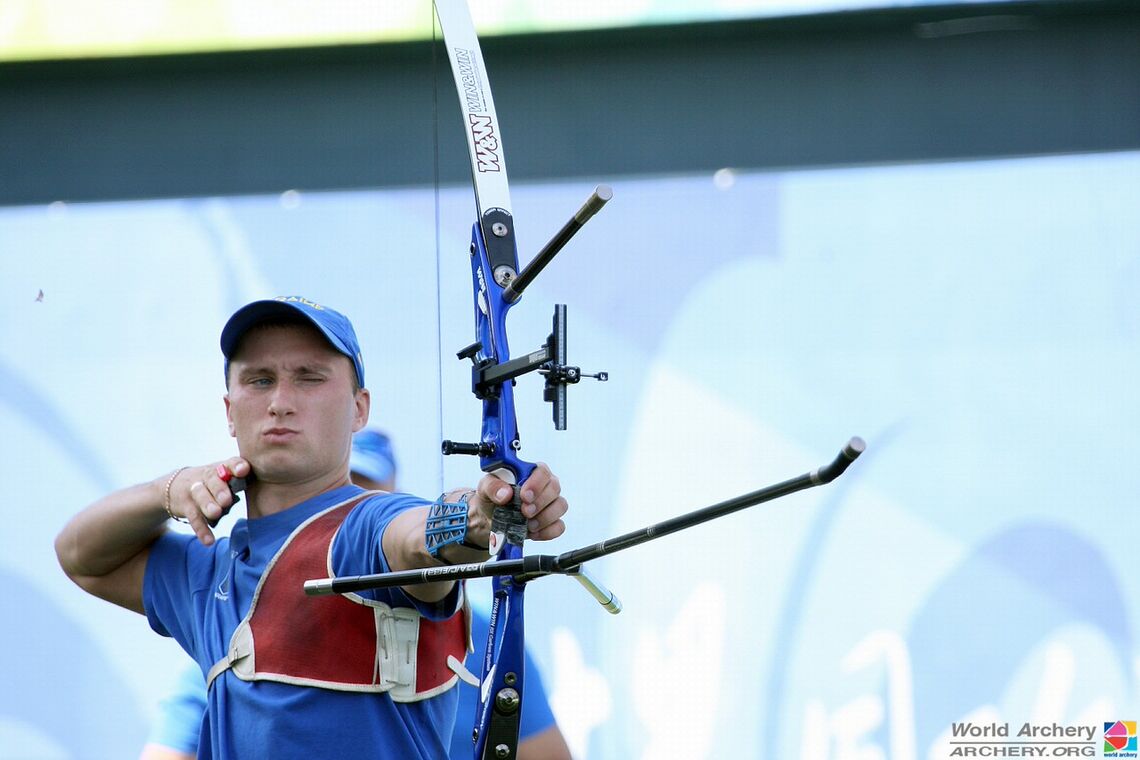
At recent Games, a number of archery have hit their fifth and sixth Olympic appearances – but in Rio, there’s something of a changing on the guard. Just one athlete is at Games number five, and the rest of the most capped of the field will be shooting for (only) their fourth time under the Olympic rings, and there are just six of them.
Five Olympics
Four Olympics
4. Olympic debutants
An incredible 66% of the field will compete at their first Olympic Games in Rio. (The figures don’t take into account Youth Olympic Games.) The pie chart shows the breakdown of Olympic experience, including the appearance the athletes are about to earn in Rio.
- 1 Olympics (Rio): 84 athletes
- 2 Olympics: 26 athletes
- 3 Olympics: 11 athletes
- 4 Olympics: 6 athletes
- 5 Olympics: 1 ATHLETE
5. First-time teams
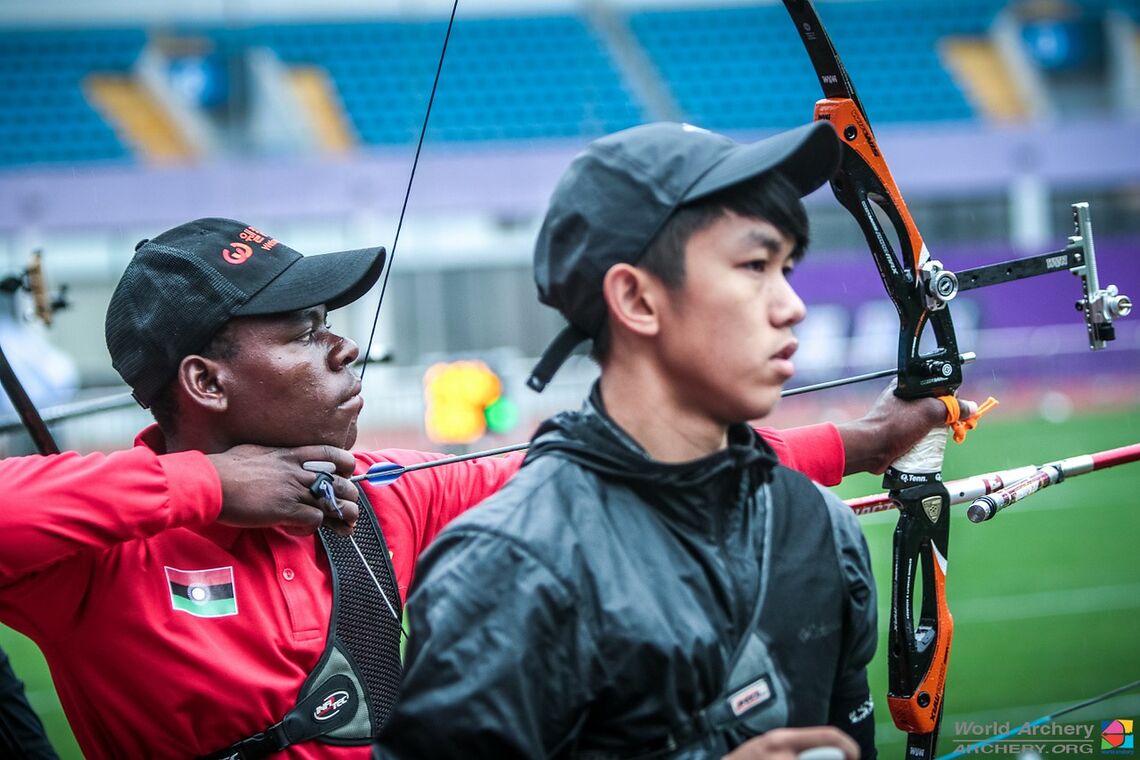
Six National Olympic Committees have archers shooting at the Olympics for the first time in their histories. The list includes three places issued by the Tripartite commission, which ensures universality and diversity in the competitions, and four that had archers who qualified spots.
- Azerbaijan

- Dominican Republic

- Libya
 – Tripartite
– Tripartite - Malawi
 – Tripartite
– Tripartite - Nepal
 – Tripartite
– Tripartite - Slovakia

Austria and Zimbabwe, too, qualified archers for the first time – but the nation had sent athletes to compete in the Games before the quota system was brought in for archery. (Teams could enter whoever they wished back then.)
6. Youth Olympics
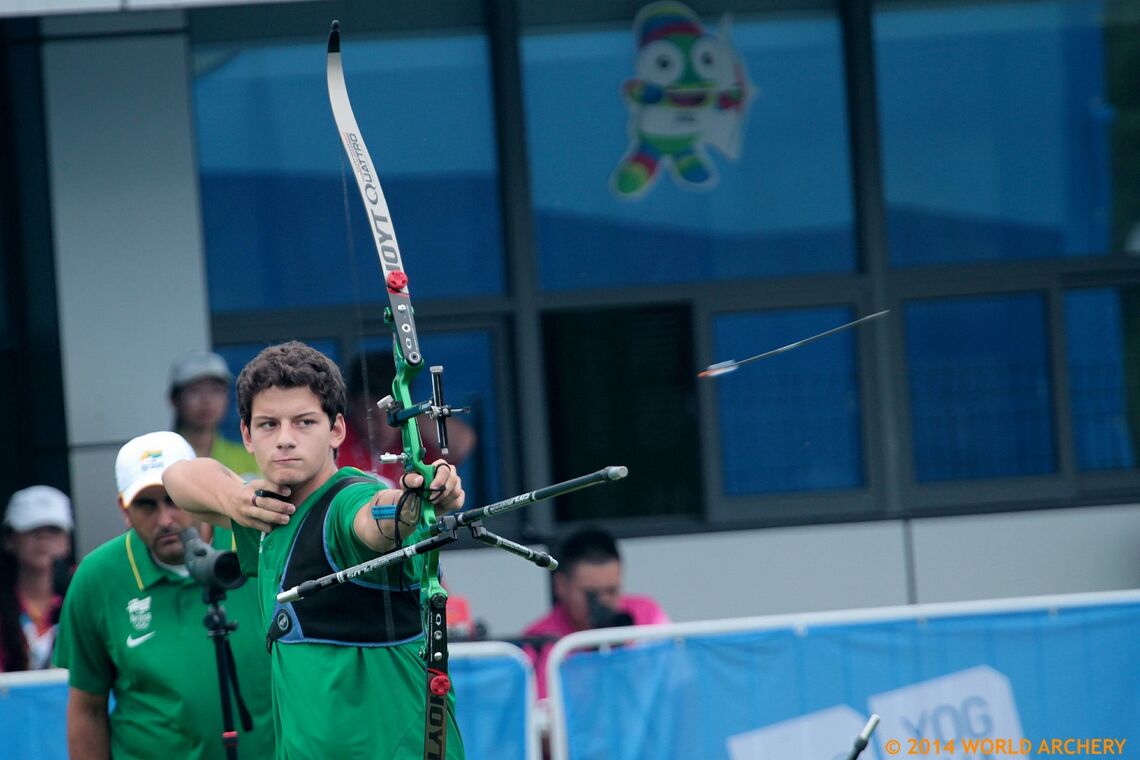
Twelve Rio archers have previously competed at a Youth Olympic Games. The list includes four from the first edition of the YOG – in Singapore in 2010 – and eight from the Nanjing 2014 event, and two of the 12 had medals.
Tan Ya-Ting was runner-up in the girls’ event in ’10, and the hosts’ Marcus D’Almeida was silver medallist four years later.
- TAN YA-TING
 – 2010
– 2010 - ATANU DAS
 – 2010
– 2010 - LIDIIA SICHENIKOVA
 – 2010
– 2010 - ALICE INGLEY
 – 2010
– 2010 - ALEXANDRA MIRCA
 – 2010
– 2010 - LUSI TATAFU
 – 2014
– 2014 - BORIS BALAZ
 – 2014
– 2014 - YASEMIN ANAGOZ
 – 2014
– 2014 - METE GAZOZ
 – 2014
– 2014 - MARCUS D’ALMEIDA
 – 2014
– 2014 - HENDRA PURNAMA
 – 2014
– 2014 - ALI EL GHRARI
 – 2014
– 2014
7. Oldest…
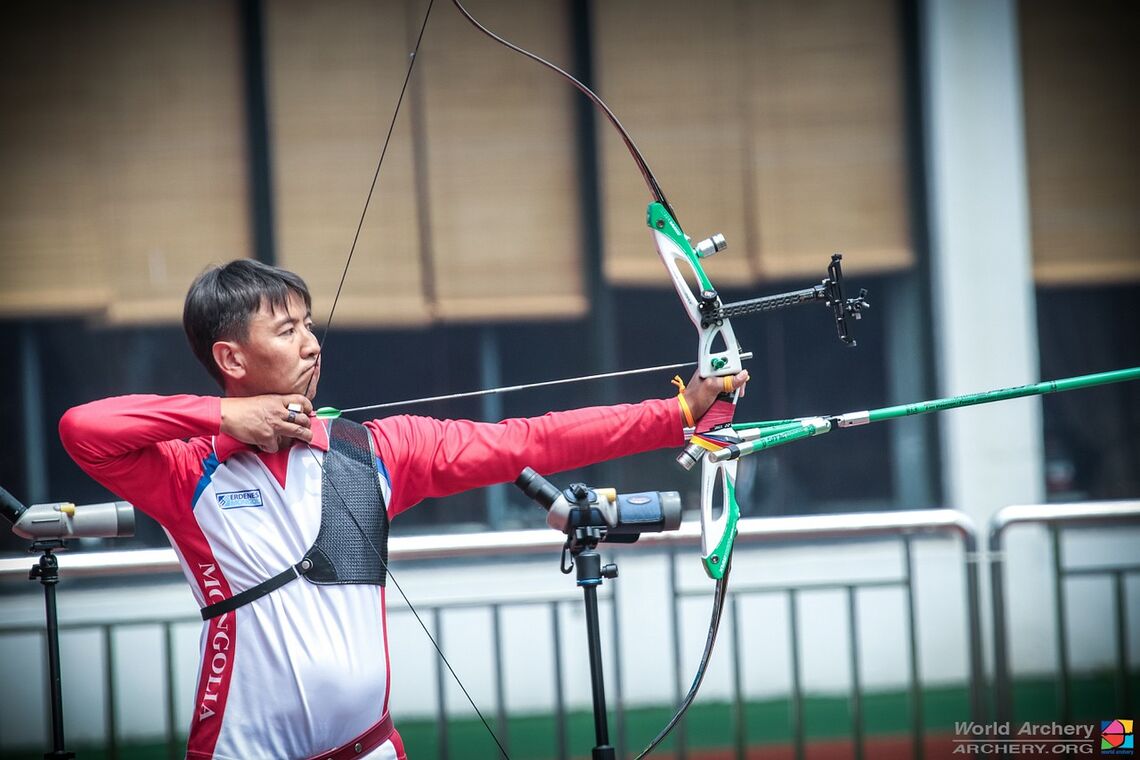
Gantugs Jantsan will be the oldest archer to take to the Olympic field in Rio de Janeiro. The 44-year-old Mongolian athlete finished 33rd at London 2012. He finished second at Asia’s continental qualifying tournament to secure the place.
8. …and youngest

Chilean athlete Ricardo Soto will be 16 years of age when the Games begin.
Turkey’s pair, Yasemin Anagoz and Mete Gazoz – who both took places at the European qualification tournament, where Mete went on to finish runner-up for the European title – are both 17.
9. Qualifying bar
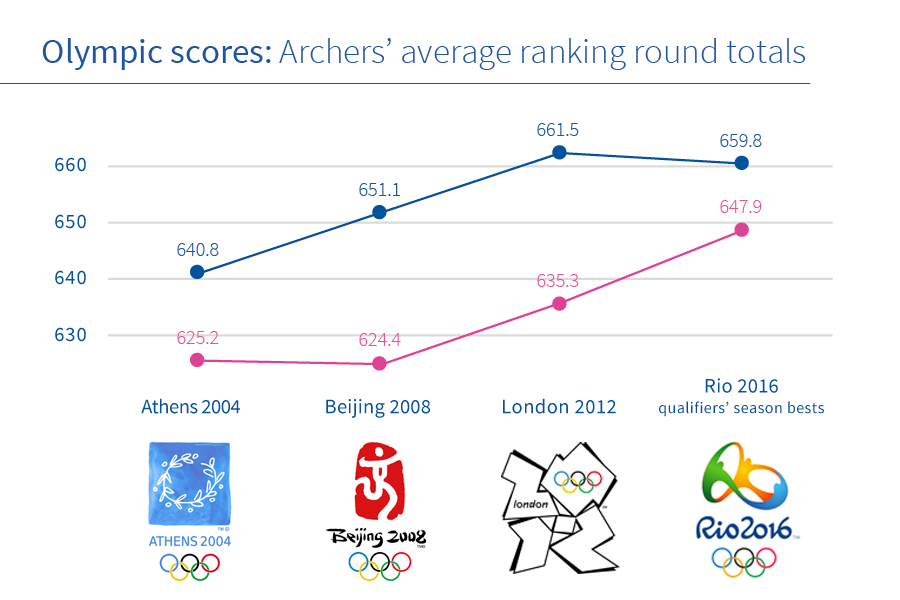
(This comparison needs a leap of faith, which – at number nine – you’ll hopefully be prepared to take!)
The average qualification score for the 64 men competing at London 2012 was 661.5. For women, it was 635.3. The average season best for the men shooting Rio – at world ranking tournaments competed at in 2016 – and as of 18 July, is 659.8, while for women it’s 647.8.
If we take the assumption that athletes are saving their best for the Games – the level always seems to increase – we can infer that while the men will produce more incredible performances (we’re all watching that world record), it’s the women’s level that’s taken a jump up.
More comparison to come on 5 August, when the ranking round’s been shot.
9.5 (the bonus) Average Arrow
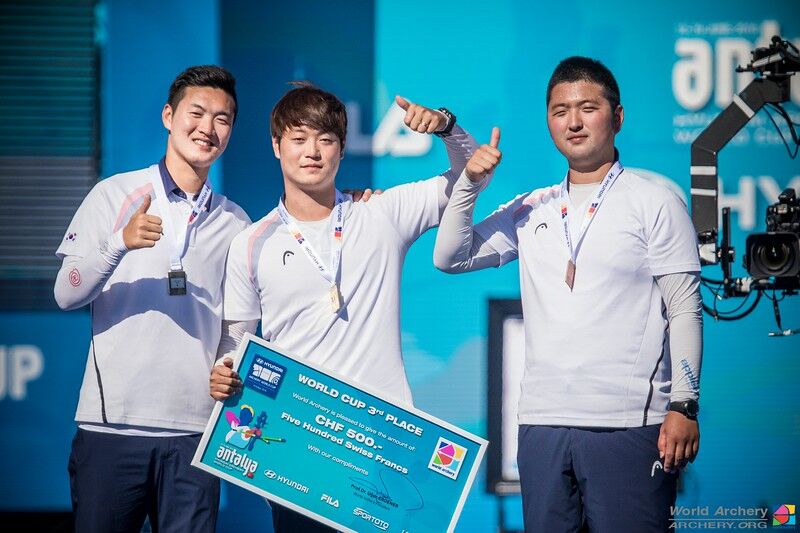
Ku Bonchan, Kim Woojin and Lee Seungyun have each averaged 9.5/10 per arrow over the last 24 months in world-ranking level competition, and that leads the Rio field. That’s right – no-one’s beaten any of the Korean men’s team, arrow-for-arrow, in the two-year lead-up to the Games.
If the trio manage that level during the Rio ranking round, they’d post a team qualification score of 2052. Incredibly, still 35 points lower than Korea’s bronze-medal winning team managed at London 2012, which still stands as the world record.
(Brady Ellison and Choi Misun fall in just behind the Korean men on 9.4.)
10. World-wide event

Compared to London, the segments of the 128-athlete pie have increase for three of the five Olympic continents. America’s share has grown, not least thanks to the six spaces Brazil receives as host country – but it’s the increase for Africa and Oceania that is most important.
Australia qualified a full men’s team at the primary qualifier, which didn’t happen in 2012 – while the level of African archers has simply increased in the last four years.
(Of course, this does mean that both the European and Asian athlete totals have decreased a bit.)

 – Athens 2004
– Athens 2004 – London 2012
– London 2012 – Beijing 2008
– Beijing 2008 – 76%
– 76% – 76%
– 76%





 – Tripartite
– Tripartite  – Tripartite
– Tripartite  – Tripartite
– Tripartite 
 – 2010
– 2010 – 2010
– 2010 – 2010
– 2010 – 2010
– 2010 – 2014
– 2014 – 2014
– 2014 – 2014
– 2014 – 2014
– 2014









